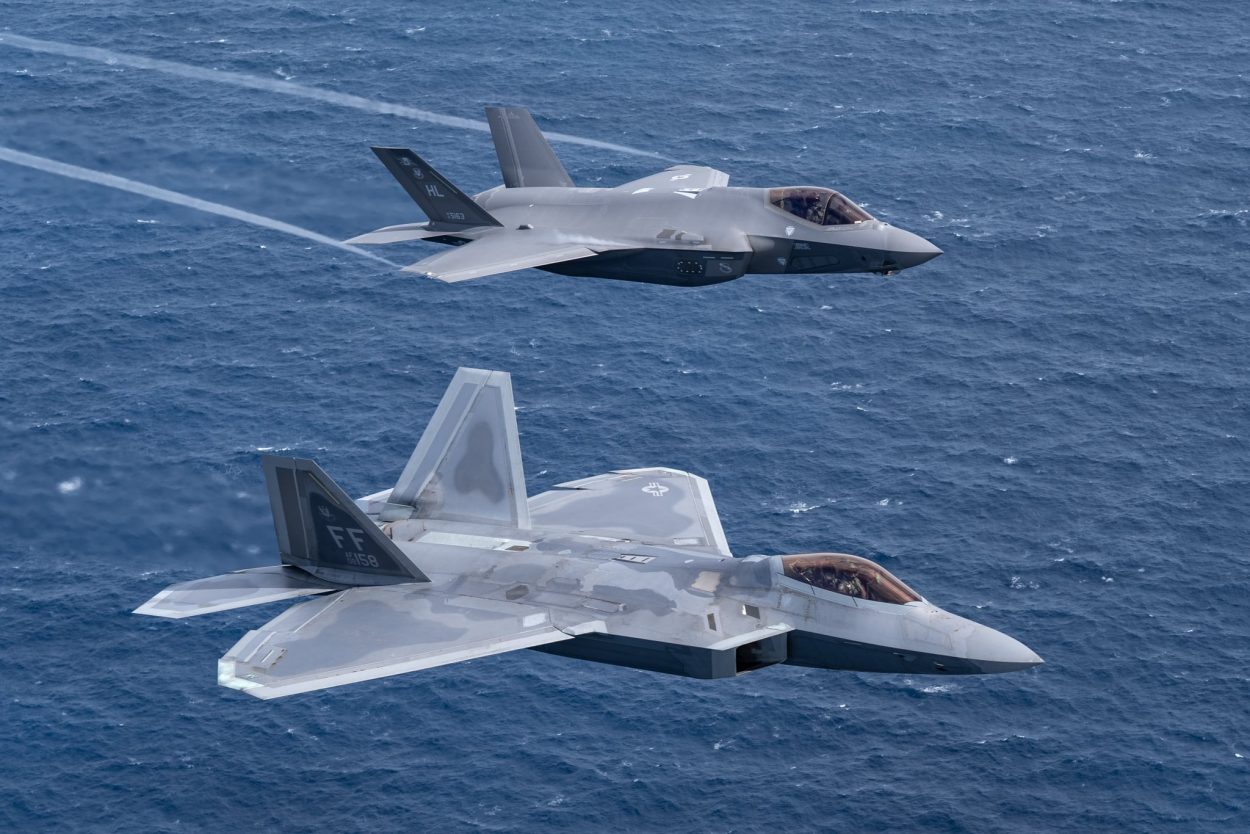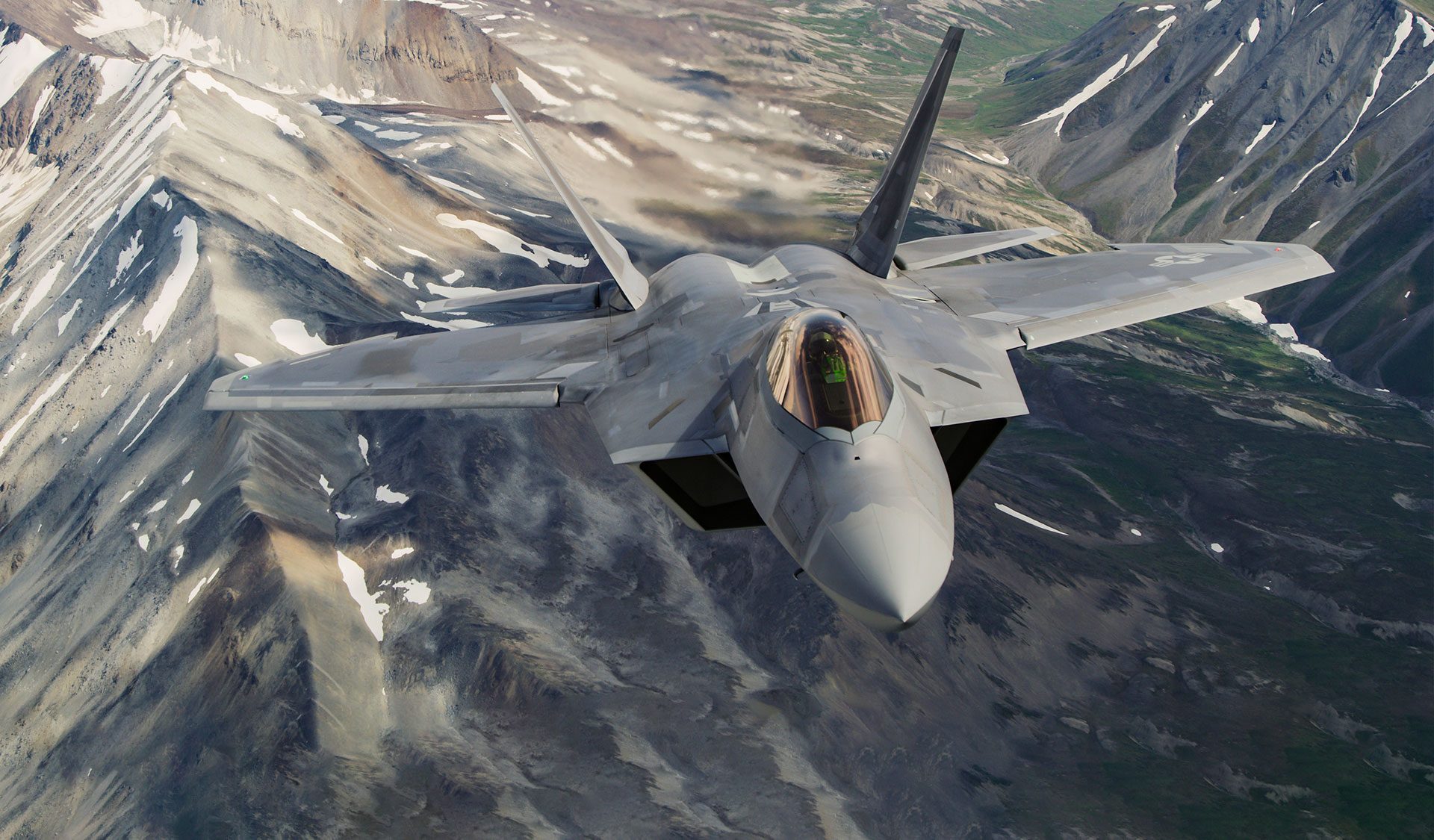Lockheed Martin has won a more than $10.8 billion US Air Force contract to provide for Advanced Raptor Enhancement and Sustainment for the F-22 Program Office, the US Defense Department said in a press release.
“Lockheed Martin Corporation [of] Fort Worth, Texas has been awarded a $10.863 billion …contract for Advanced Raptor Enhancement and Sustainment (ARES) for the F-22 Program Office,” the release said on Friday.
The contract provides support for necessary supplies and services to sustain and modernize the F-22 Raptor jet, including modernization hardware kit procurement and services such as upgrades, enhancements and fixes as well as performance-based logistics services, the release said.
The Lockheed Martin F-22 Raptor is a single-seat, twin-engine, all-weather stealth tactical fighter aircraft that was designed as an air superiority jet, but also has ground attack, electronic warfare and signals intelligence capabilities.

The US Air Force had originally planned to buy a total of 750 jets, but the program was cut to 187 operational aircraft in 2009 due to high costs, a lack of clear air-to-air missions during production, a ban on exports and the development of the F-35 Joint Strike Fighter. The last F-22 was delivered in 2012.
Lt. Gen. Clinton Hinote, Air Force deputy chief of staff for strategy, integration, and requirements, stated that the Raptor will be used as a “bridge” until the Next Generation Air Dominance program is ready.
Advanced Raptor Enhancement & Sustainment (ARES)
On August 19, 2020, the United States Air Force (USAF) began a modernization program for the Lockheed Martin F-22 combat aircraft known as Advanced Raptor Enhancement and Sustainment (ARES).
A pre-solicitation summary for federal contract listings was released by the US Air Force Life Cycle Management Center (AFLCMC).
According to the listing, Lockheed Martin Aeronautics (LMA) is the only company capable of meeting the Air Force’s needs because it is the sole designer, development, and manufacturer of the F-22 Raptor combat plane.
Studies, analyses, and demonstration; test force and system laboratory support; and flight software modernization and sustainment are among the responsibilities specified in the notification. The proposed deal was a follow-on to the Raptor Enhancement, Development, and Integration II (REDI II) contract, as per the notification.

US Stops Producing F-22 Stealth Fighters
The F-22 was developed to revolutionize the way combat jets are built and operated. They’re stealthy, quick, and extremely maneuverable. The two Pratt & Whitney turbofan engines, which deliver more thrust than any other fifth-generation jet, are the foundation of its air superiority.
The US Air Force had planned to buy 750 F-22s to build a strong fleet of stealth interceptors for the 21st century.
However, after the collapse of the USSR, the US got more involved in counter-terror and counter-insurgency operations against technologically inferior forces, the demand for superior dogfighters diminished.
The F-22 program was stopped down in December 2011 with only 186 fighters delivered.
The aircraft needs to be looked after, and upkeep is expensive. The Air Force has roughly 180 F-22s in its inventory, but at any given time, about half of them are grounded due to maintenance concerns. Pre-flight tests on the F-22 take hours, with multiple crew members digging over every inch of the warplane.
Despite the fact that the F-22 Advanced Tactical Fighter program was discontinued in favor of the F-35 Joint Strike Fighter, the F-22 remains a key weapon in the US Air Force’s arsenal.
Since its introduction in 2003, the F-22 has received updates to its avionics, life support systems, and the addition of new air-to-air and air-to-ground missiles. The enormous cost of this fighter plane is one of its key drawbacks. Part of the issue is that there is no universally accepted method for calculating the F-22’s cost.
F-22 Raptor – Not For Sale
The US was clear that the F-22 Raptor will not be up for exports even to the closest allies like the UK or Israel. The government, and specifically Congressman David Obey, apprehended that the highly secretive technology could be leaked and reverse-engineered by adversaries.
However, the unstated reason is believed to be that Washington was skeptical of Israel transferring the stealth technology to Russia or China. Since the US couldn’t isolate Israel and endanger its diplomatic ties, it initiated an export ban that put the Raptor out of reach for all possible customers.
This was done via the Obey Amendment. This comprised of a single sentence added to the 1998 Department of Defense Appropriations Act. The Obey Amendment read, “none of the funds made available in this Act may be used to approve or license the sale of F-22 advanced tactical fighter to any foreign government”.
- With Inputs from Sputnik News Agency
- Contact the author at etdesk@eurasiantimes.com
- Follow EurAsian Times on Google News




